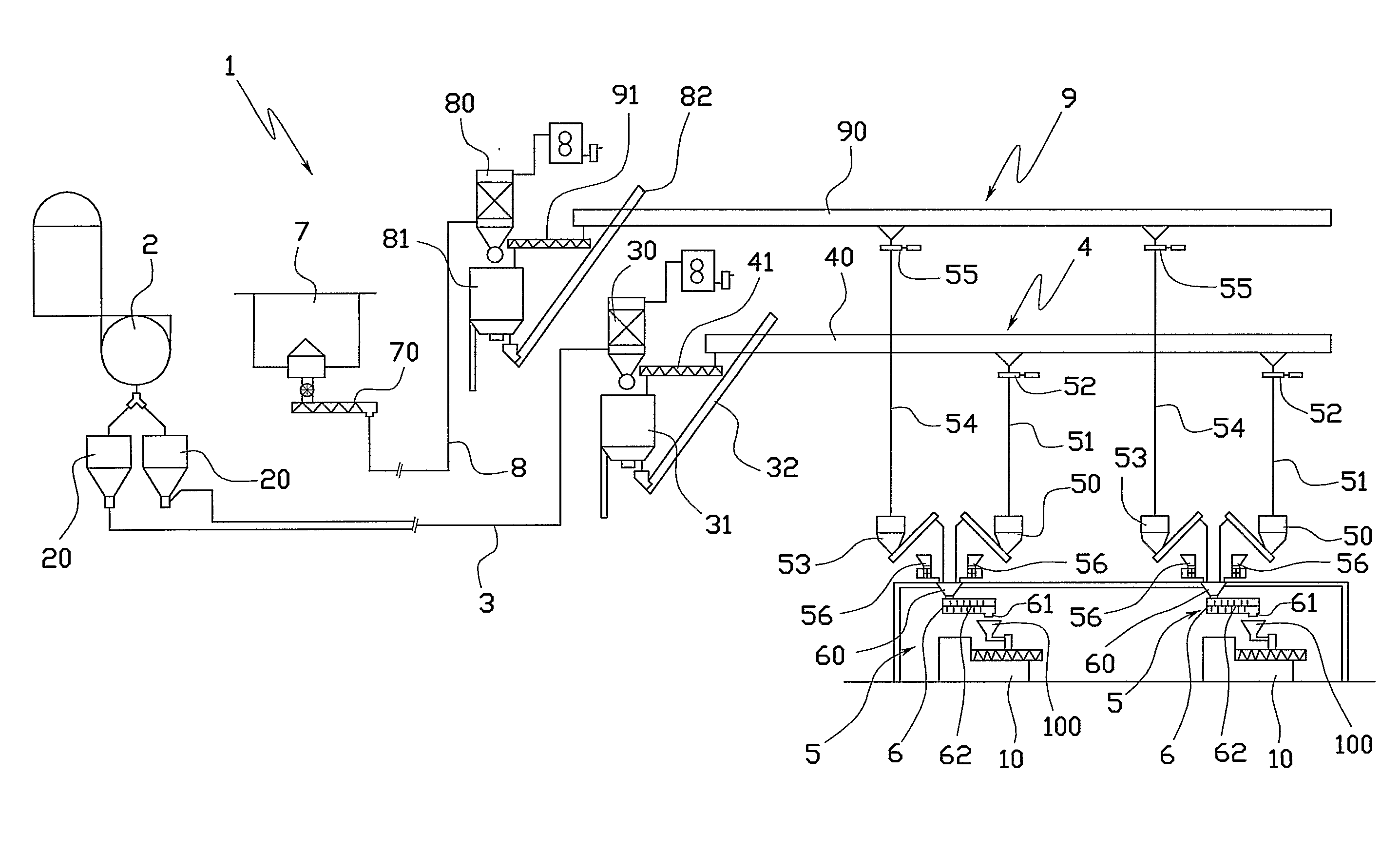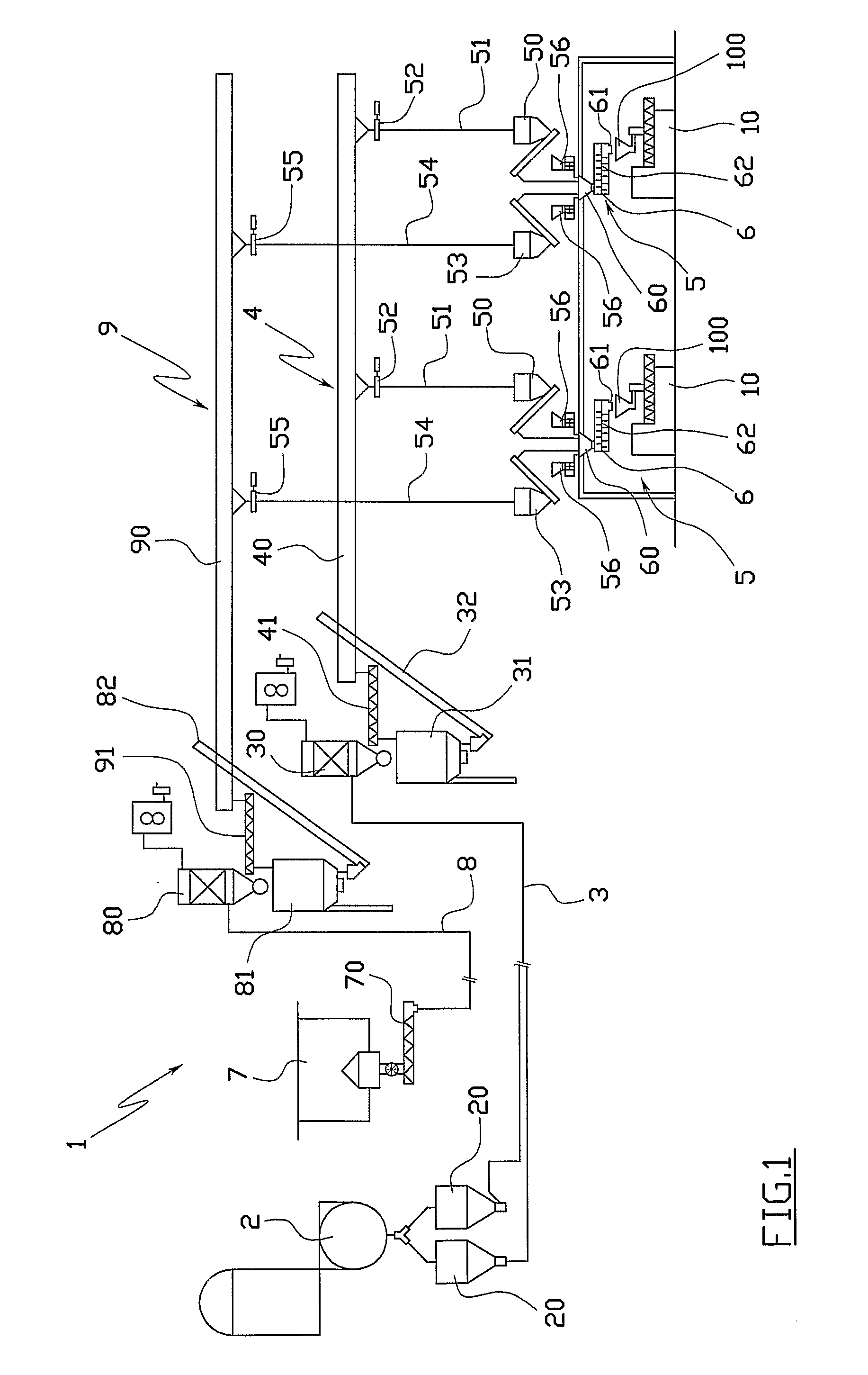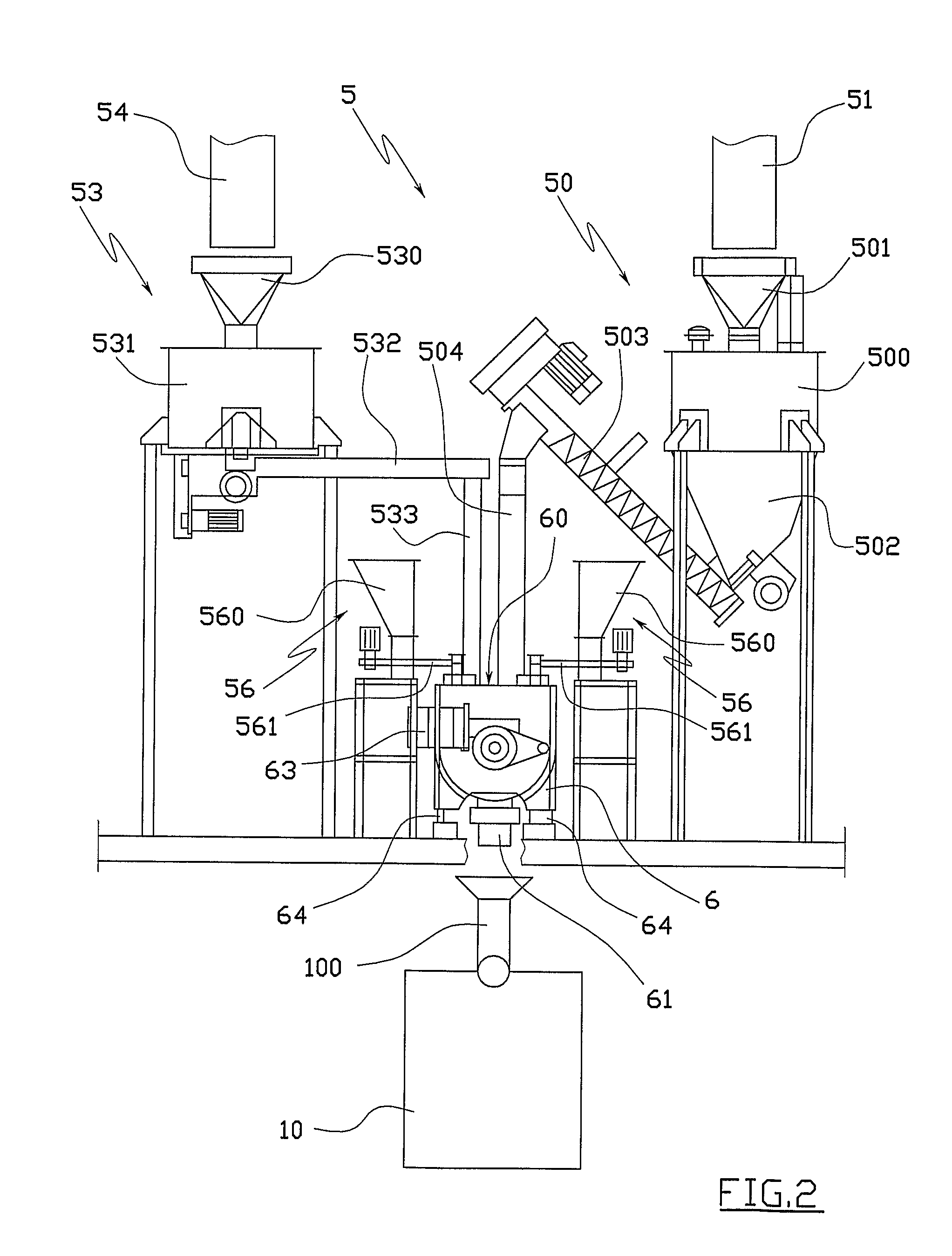Extrusion method and a plant therefor
a technology of extrusion method and plant, which is applied in the directions of transportation and packaging, mixing, chemical apparatus and processes, etc., can solve the problems of reducing the mechanical characteristics of the product available, creating various drawbacks and technical limitations, and high cost of extrusion plants, so as to increase the flexibility of the extrusion process.
- Summary
- Abstract
- Description
- Claims
- Application Information
AI Technical Summary
Benefits of technology
Problems solved by technology
Method used
Image
Examples
Embodiment Construction
[0045]The figures of the drawings illustrate a plant 1 for extrusion of polymer products, such as for example tubes and / or shaped bars, starting from a mixture of solid loose particles, formed by polymer powders and additives, among which, for example, fillers, stabilisers, plasticisers, slips, colorants and others.
[0046]The plant 1 is described herein with reference to an extrusion process of PVC-based products with calcium carbonate as a filler. This does not mean however that the plant 1 cannot be used similarly with other types of polymer powders and / or other types of filler.
[0047]The plant 1 is provided with a usual turbomixer 2, which generally comprises an external casing, into which the polymer powders and the additives are introduced in granular or powder form, and a rotating reel which rotates at high speed internally of the casing. The rapid rotation of the reel generates both mechanical and thermal effects, which enable a stable aggregation to be obtained among the polym...
PUM
 Login to View More
Login to View More Abstract
Description
Claims
Application Information
 Login to View More
Login to View More - R&D
- Intellectual Property
- Life Sciences
- Materials
- Tech Scout
- Unparalleled Data Quality
- Higher Quality Content
- 60% Fewer Hallucinations
Browse by: Latest US Patents, China's latest patents, Technical Efficacy Thesaurus, Application Domain, Technology Topic, Popular Technical Reports.
© 2025 PatSnap. All rights reserved.Legal|Privacy policy|Modern Slavery Act Transparency Statement|Sitemap|About US| Contact US: help@patsnap.com



